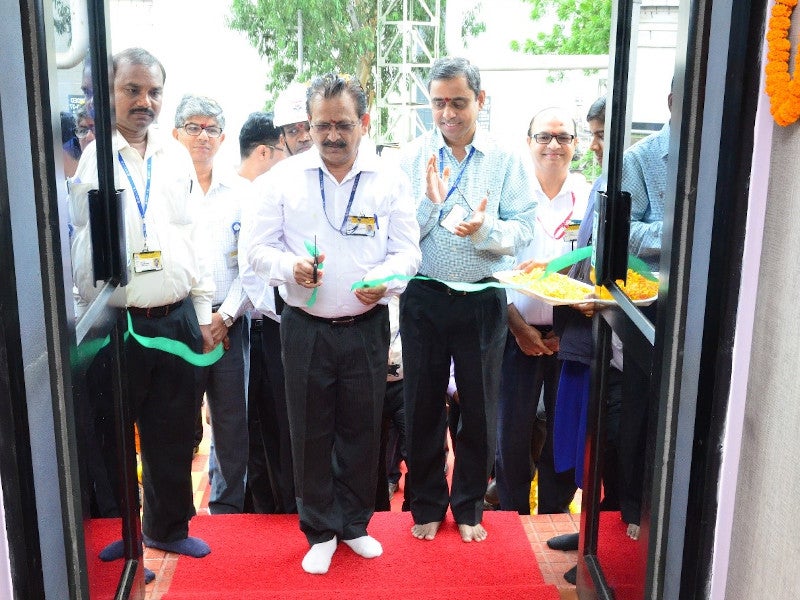The HPCL Visakh refinery, also known as the Vishakhapatnam refinery, in Andhra Pradesh, India is undergoing an expansion cum modernisation project to increase its processing capacity from 8.33 million tonnes per annum (Mtpa) to 15Mtpa.
Originally commissioned by Caltex Oil Refining India (CORIL) with 0.675Mtpa installed capacity in 1956, it is the oldest oil refinery site on the eastern coast of India. It has been owned and operated by India’s state-owned Hindustan Petroleum (HPCL) since 1978.
The refinery’s capacity was increased to 4.5Mtpa in 1985, to 7.5Mtpa in 1999, and to 8.3Mtpa in 2010.
The ongoing Visakh refinery modernisation project (VRMP), which is in the advanced stage of completion, will enable the production of Bharat Stage Emission Standards VI (BSVI)-compliant fuels, apart from boosting the overall processing capacity.
HPCL Visakh refinery location
The Visakh refinery is located approximately 1km north from the foot of the Yarada Hills in the Malkapuram village of Visakhapatnam district, Andhra Pradesh.
The refinery site lies approximately 6.5km away from the Visakhapatnam railway station and approximately 5km away from the Visakhapatnam airport.
Processing infrastructure
The HPCL Visakh refinery is an integrated refinery facility spread over 723 acres. It comprises three crude distillation units (CDUs), a naptha hydrotreating (NHT), isomerisation (ISOM) and catalytic reforming (CCR) complex, a diesel hydro desulphurisation unit, two fluid catalytic cracking (FCC) units, a diesel hydro-treating unit, a visbreaker unit (VBU), a bitumen blowing unit (BBU), and a propylene recovery unit.
The upgrade facilities will be built within the existing refinery. An additional area of 50acres leased by HPCL from the Vishakhapatnam Port Trust will house the petroleum storage units for the modernisation project.
HPCL Visakh refinery modernisation details
The modernisation project will add a hydrogen generation unit (HGU) comprising two trains with a design capacity of 113ktpa each, and a pressure swing adsorption unit of 36ktpa of hydrogen production capacity.
A new CDU/VDU-IV with a processing capacity of 9Mtpa will replace one of the three existing CDUs, while the other two CDUs continue to process 3Mtpa each.
A full conversion hydrocracker unit of 2.8Mtpa capacity will be installed to process the excess gas oil after saturating the existing FCCs. All the sour gas oil is processed in once through hydro-cracker unit (OHCU) and the FCC feed comprises OHCU bottoms and sweet vacuum gas oil (VGO).
The VGO hydro-treater is considered only for preparing feed for the new FCC-PC unit whereas the existing FCCs will continue to process the sour VGO.
The modernisation project also includes the installation of new residue upgradation units to process the entire vacuum residue for the 15Mtpa capacity refinery. A new solvent deasphalting unit of 2.55Mtpa capacity will be installed to process the balance vacuum residue after saturating the existing VBU and BBU.
An 200ktpa additional alkylation unit, a 2.8Mtpa slurry hydrocracker, and a 128tpd propylene recovery unit (PRU) will also be installed as part of the modernisation project. Auxiliary units will include the sulphur and amine recovery units, as well as the LPG treating units.
Contractors involved
Engineers India (EIL) was selected to prepare the feasibility report and to provide the project management services for the modernisation project.
In March 2017, Honeywell was selected to supply licensing, basic engineering design and other associated services for a Penex’ isomerisation unit that produces cleaner burning high-octane gasoline, and a Unicracking’ hydrocracking unit to produce cleaner burning diesel fuel.
Petrofac was awarded a £155m ($200m) lump-sum engineering, procurement and construction (EPC) contract for the installation, licensing and commissioning of a sulphur recovery unit (SRU) block package in 2018.
TechnipFMC was selected for carrying out the grassroot HGU works in July 2018.The scope of the contract included project management, technology licensing, preparation of basic design and engineering package, as well as detailed engineering, procurement, construction, commissioning, and performance guarantee test run on a licensed plus engineering, procurement, construction, and commissioning (LEPCC) basis.
BHEL was contracted for performing the civil works including super structure works and architectural works for the SWGR cum cellar building for a combined-cycle captive power plant at the refinery site.
GE Power was selected by BHEL to supply the 6F.03 gas turbine and generator for the HPCL refinery in August 2018. The gas turbine has the potential to generate 60MW of power for plant operations and the exhaust steam energy generated will be utilised for processing applications at the facility.





